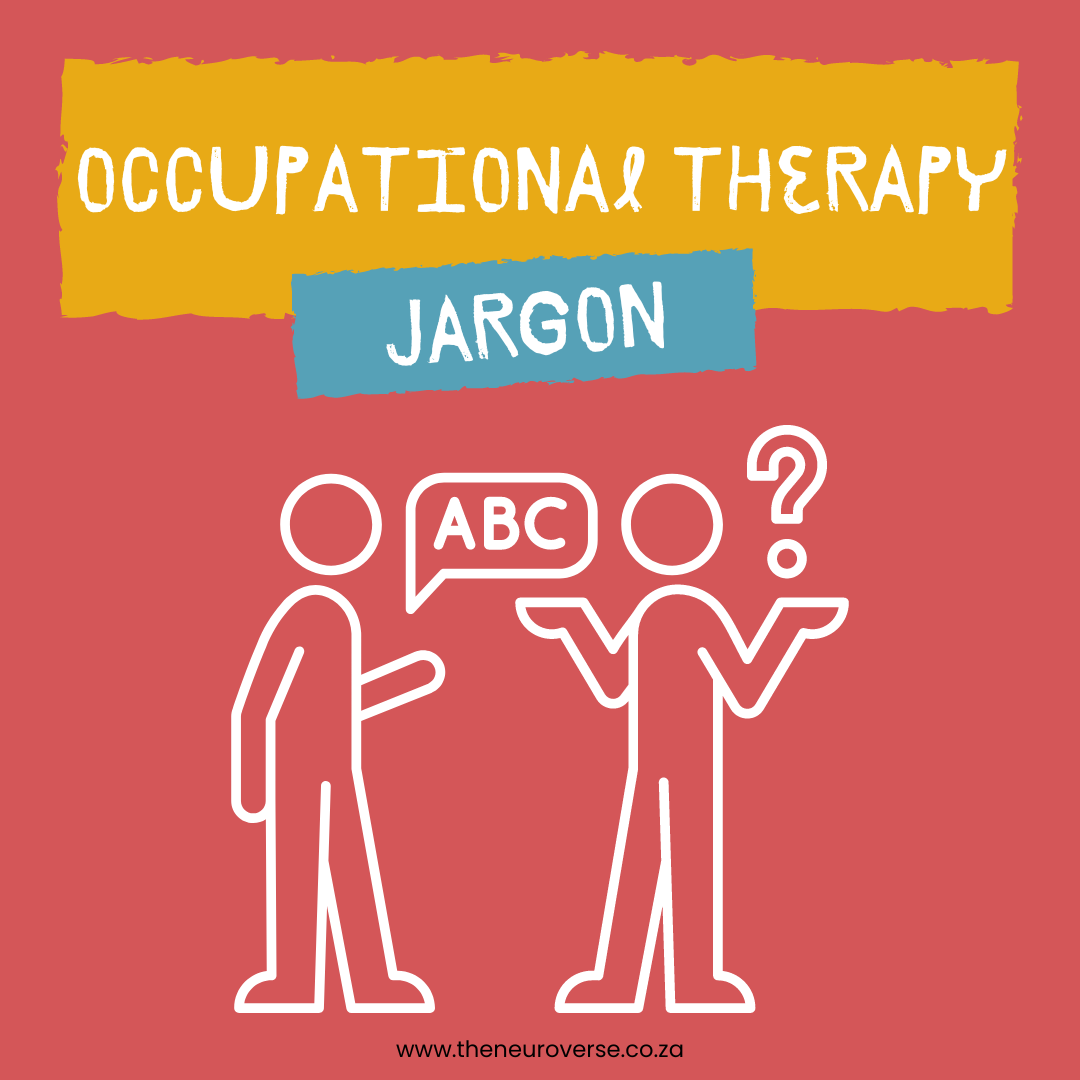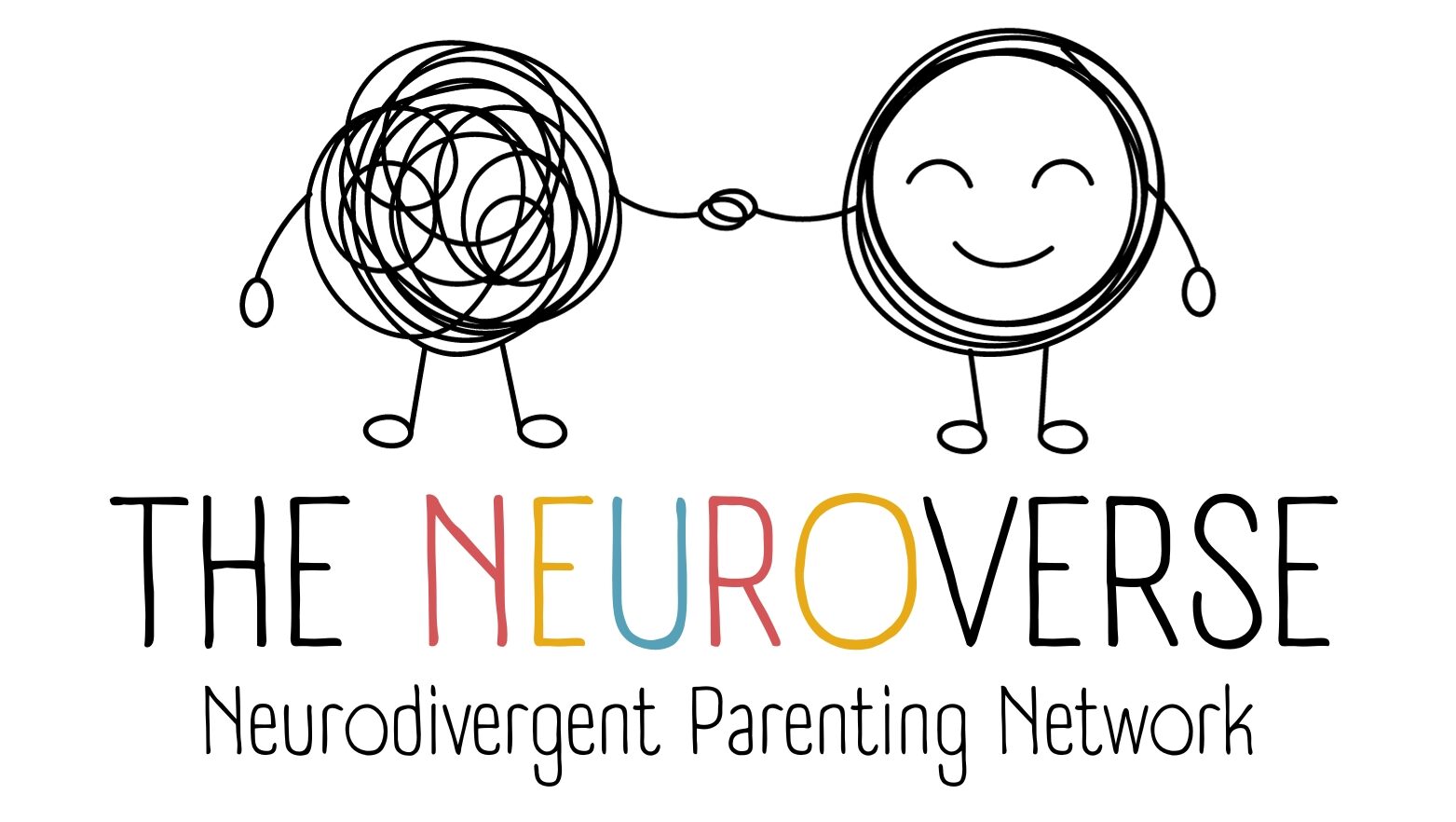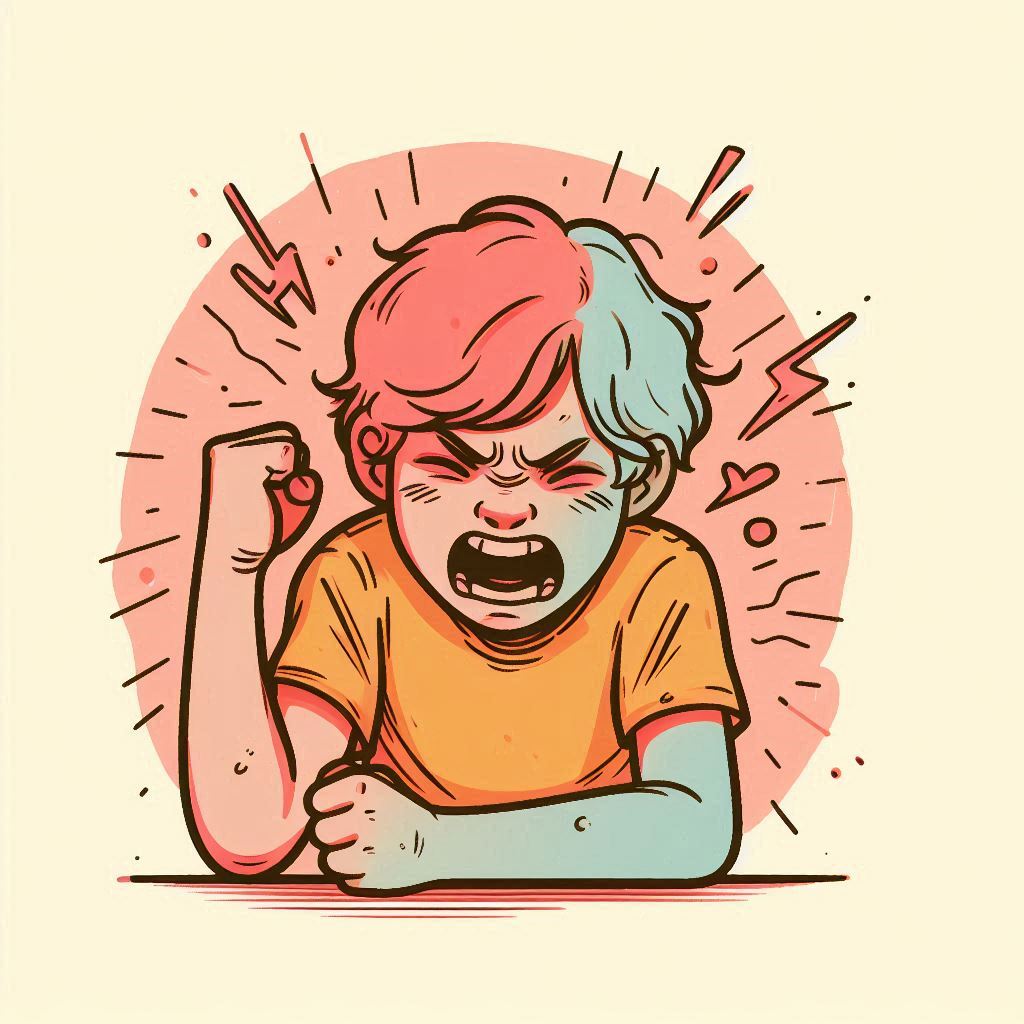Do You Know Your OT Jargon?

The world of neurodiversity has its own unique terminology—check out our article on ACRONYMS here. Similarly, Occupational Therapists (OTs) use specific terms to describe various aspects of child development and sensory processing, which can sometimes feel overwhelming or too technical.
Understanding this language can help you better navigate therapy sessions and feel more empowered in supporting your child’s development.
Let’s break down what they’re saying so we, as parents, can better understand.
Here’s a list of commonly used ‘OT jargon’:
- ADLs (Activities of Daily Living) – Daily tasks like dressing, eating, and hygiene.
- Why it matters: Neurodivergent kids may struggle with motor skills, sensory sensitivities, or attention, making daily tasks more challenging. OT helps break these tasks into smaller, manageable steps.
- Fine Motor Skills – Small muscle movements, especially in hands and fingers (e.g., writing, buttoning).
- Why it matters: Improving fine motor skills can significantly impact your child’s ability to participate in school activities (e.g., writing, cutting with scissors) and daily routines.
- Gross Motor Skills – Large muscle movements (e.g. running, jumping, climbing).
- Why it matters: OTs may work with neurodivergent children who have difficulties with balance, coordination, or physical strength to improve their overall mobility and participation in group activities.
- Sensory Integration – How the brain processes and responds to sensory input.
- Why it matters: OTs use sensory integration therapy to help kids better regulate their responses to sensory stimuli, allowing them to engage more comfortably in their environment .
- Proprioception – Awareness of body position and movement.
- Why it matters: Activities like jumping, squeezing, or pushing heavy objects can help improve proprioception. OTs use these techniques to enhance your child’s body awareness and movement control .
- Vestibular System – Related to balance and spatial orientation.
- Why it matters: OTs might use vestibular exercises, such as balance boards or swinging, to help children regulate their vestibular systems and improve balance and coordination .
- Modulation – The ability to regulate responses to sensory input.
- Why it matters: OTs assess modulation and create strategies to help children regulate their sensory input, improving focus, behaviour, and participation in everyday tasks .
- Praxis – Motor planning; the ability to plan and execute movements.
- Why it matters: Through therapeutic exercises, OTs help children improve their motor planning skills, making it easier for them to perform everyday tasks with greater independence .
- Executive Function – Cognitive skills like planning, attention and problem-solving.
- Why it matters: OTs help children develop strategies to improve executive function, such as breaking down tasks into smaller steps, setting timers, or using visual aids .
- Bilateral Coordination – Using both sides of the body together in a controlled way.
- Why it matters: OTs work on exercises that improve bilateral coordination to enhance your child’s ability to perform complex, everyday tasks like tying shoes or using scissors
- Hand-Eye Coordination – Coordinating vision with hand movements.
- Why it matters: OTs work to improve hand-eye coordination through exercises and activities that build motor control, which in turn helps the child develop independence and confidence in their abilities.
- Sensory Diet – A tailored set of activities to meet a child’s sensory needs.
- Why it matters: For neurodivergent children with sensory sensitivities, a sensory diet can help balance their sensory needs, promoting calm and focus throughout the day .
- Visual Perception – How the brain interprets visual information (e.g. recognising shapes, letters).
- Why it matters: OTs will work on strategies to improve visual perception which can affect kids’ ability to read, write, solve puzzles, or participate in sports.
- Therapeutic Use of Self – How the therapist uses their own personality, insights, and communication to engage clients in therapy.
- Why it matters: Your child’s OT may use this to build a trusting and supportive relationship between themselves and the child.
- Tactile Defensiveness – An overreaction to touch or textures.
- Why it matters: OTs introduce gradual exposure to various textures and sensations to help children become more comfortable with touch and reduce anxiety related to tactile experiences.
- Motor Coordination – The ability to smoothly combine movements using fine and gross motor skills.
- Why it matters: Challenges in motor coordination can affect a child’s ability to perform everyday tasks like buttoning a shirt, participating in physical activities, or completing school assignments.
- Postural Control – The ability to maintain body position and balance.
- Why it matters: Poor postural control can lead to challenges with sitting still in class, ring time, participating in sports or even maintaining proper posture while performing tasks.
- Fidget Tools – Items that help with self-regulation and focus by engaging the hands.
- Why it matters: These tools offer a way for children to channel excess energy, reduce anxiety, and enhance concentration, especially in settings like school or during tasks requiring sustained attention.
- Deep Pressure – Sensory input provided by firm touch, squeezing, or compression.
- Why it matters: Deep pressure can be especially beneficial for neurodivergent children. It can have a calming effect, helping to reduce anxiety, improve focus, and regulate sensory responses.
- Core Strength – Strength in the torso muscles that support balance and posture.
- Why it matters: Encouraging activities that build core strength can improve your child’s overall motor skills, posture, and ability to engage in daily tasks and social interactions more effectively.
- Regulation– Refers to a child’s ability to manage their emotional, sensory, and physical responses to the environment.
- Why it matters: Understanding what your child needs to regulate is crucial. Effective regulation helps children stay calm, concentrate better, and respond appropriately to different situations.
Understanding OT terminology is a powerful tool for parents of neurodivergent children. Knowing these key terms helps you better communicate with your child’s OT, advocate for their needs, and implement helpful strategies at home. By understanding the concepts behind fine motor skills, sensory integration, and proprioception, you can more effectively support your child’s development and create a more nurturing environment for them to thrive.
References:
- Schaaf, R. C., & Mailloux, Z. (2015). Sensory Integration: Applying Clinical Reasoning to Practice with Diverse Populations. OT Practice.
- Miller, L. J., Anzalone, M. E., Lane, S. J., Cermak, S. A., & Osten, E. T. (2007). Concept evolution in sensory integration: A proposed nosology for diagnosis. The American Journal of Occupational Therapy.
- American Occupational Therapy Association. (2020). Occupational Therapy Practice Framework: Domain and Process (4th ed.). The American Journal of Occupational Therapy.
- Hanft, B. E., & Shepard, J. S. (2008). Collaborating for student success: A guide for school-based occupational therapy. American Occupational Therapy Association.
- Parham, L. D., & Ecker, C. (2007). Sensory integration and the child: 25th anniversary edition. Western Psychological Services.



Leave a Reply